Dr. Charles R. McClain
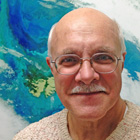 Dr. Chuck McClain received a Bachelor of Arts (BA) degree from William Jewell College (physics) in 1970 and Doctor of Philosophy (PhD) from North Carolina State University (marine science) in 1976. From 1976 to 1978, he was a post-doctoral fellow at the Naval Research Laboratory in Washington, DC and worked on validation of GEOS-3 altimeter estimates of significant wave heights. Since 1978, he has worked at NASA Goddard Space Flight Center in Greenbelt, Maryland. During his career at NASA, he has conducted research on the couplings between ocean physics and biology and the marine carbon cycle using satellite ocean colour data. He was a member of the CZCS reprocessing team in the late 1980s and has assumed a number of project management roles including the SeaWiFS calibration and validation manager, project scientist, and project manager, SIMBIOS project manager, and ocean team leader for MODIS, NPP/VIIRS, and the ACE mission formulation activity. He recently served as a member of the PACE mission science definition team and was co-editor of IOCCG Report 13 of the IOCCG monograph series. He was the original principle investigator for the PC-SEAPAK and SeaDAS software packages distributed to the ocean colour research community.
Dr. Chuck McClain received a Bachelor of Arts (BA) degree from William Jewell College (physics) in 1970 and Doctor of Philosophy (PhD) from North Carolina State University (marine science) in 1976. From 1976 to 1978, he was a post-doctoral fellow at the Naval Research Laboratory in Washington, DC and worked on validation of GEOS-3 altimeter estimates of significant wave heights. Since 1978, he has worked at NASA Goddard Space Flight Center in Greenbelt, Maryland. During his career at NASA, he has conducted research on the couplings between ocean physics and biology and the marine carbon cycle using satellite ocean colour data. He was a member of the CZCS reprocessing team in the late 1980s and has assumed a number of project management roles including the SeaWiFS calibration and validation manager, project scientist, and project manager, SIMBIOS project manager, and ocean team leader for MODIS, NPP/VIIRS, and the ACE mission formulation activity. He recently served as a member of the PACE mission science definition team and was co-editor of IOCCG Report 13 of the IOCCG monograph series. He was the original principle investigator for the PC-SEAPAK and SeaDAS software packages distributed to the ocean colour research community.
Dr. Frédéric Mélin
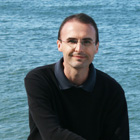 Dr. Frédéric Mélin received a degree in Engineering from the Ecole Nationale Supérieure de l’Aéronautique et de l’Espace, Toulouse (France) in 1995, and a Ph.D. from the Université Paul Sabatier, Toulouse (France) in 2003. From 1995 to 1997 he carried out research at the NASA Jet Propulsion Laboratory / California Institute of Technology (US), studying the seasonal to interannual variability of the equatorial Pacific and Indian oceans using ocean surface circulation models and satellite data. In 1998 he joined the Joint Research Centre of the European Commission (Italy). His research interests include the development, validation and analysis of optical remote sensing products, the creation of ocean colour climate data records, and the modelling of primary productivity for the study of marine ecosystems.
Dr. Frédéric Mélin received a degree in Engineering from the Ecole Nationale Supérieure de l’Aéronautique et de l’Espace, Toulouse (France) in 1995, and a Ph.D. from the Université Paul Sabatier, Toulouse (France) in 2003. From 1995 to 1997 he carried out research at the NASA Jet Propulsion Laboratory / California Institute of Technology (US), studying the seasonal to interannual variability of the equatorial Pacific and Indian oceans using ocean surface circulation models and satellite data. In 1998 he joined the Joint Research Centre of the European Commission (Italy). His research interests include the development, validation and analysis of optical remote sensing products, the creation of ocean colour climate data records, and the modelling of primary productivity for the study of marine ecosystems.
Dr. Steven G. Ackleson
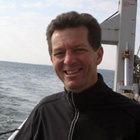 Dr. Steven G. Ackleson received a Ph.D. from the University of Delaware in 1985 and is currently the Associate Director for Education and Observation at the Consortium for Ocean Leadership, Washington, D.C., where he also served as Senior Project Scientist for the Ocean Observatories Initiative. Prior to joining the consortium, Dr. Ackleson managed the Ocean Optics Program at the Office of Naval Research, where he established major interdisciplinary projects directed at observing and modeling processes associated with the ocean surface boundary layer, interior, and shallow ocean floor. These investments produced new in situ optical sensors, coastal ocean colour algorithms for hyperspectral imagery, and instrumented autonomous systems for ocean observatories. He served as Co-Vice Chair of the Interagency Working Group for Ocean Observations and Chairman of the Ocean Optics Conference. His research experience spans diverse oceanographic problems related to optical processes and ocean colour remote sensing, including the use of flow cytometry in bio-optical studies, bio-physical coupling within the upper ocean, and particle dynamics in coastal ecosystems.
Dr. Steven G. Ackleson received a Ph.D. from the University of Delaware in 1985 and is currently the Associate Director for Education and Observation at the Consortium for Ocean Leadership, Washington, D.C., where he also served as Senior Project Scientist for the Ocean Observatories Initiative. Prior to joining the consortium, Dr. Ackleson managed the Ocean Optics Program at the Office of Naval Research, where he established major interdisciplinary projects directed at observing and modeling processes associated with the ocean surface boundary layer, interior, and shallow ocean floor. These investments produced new in situ optical sensors, coastal ocean colour algorithms for hyperspectral imagery, and instrumented autonomous systems for ocean observatories. He served as Co-Vice Chair of the Interagency Working Group for Ocean Observations and Chairman of the Ocean Optics Conference. His research experience spans diverse oceanographic problems related to optical processes and ocean colour remote sensing, including the use of flow cytometry in bio-optical studies, bio-physical coupling within the upper ocean, and particle dynamics in coastal ecosystems.
Dr. Stewart Bernard
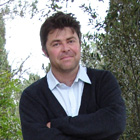 Dr. Stewart Bernard grew up in Zimbabwe, Malawi and England before completing M.Sc and PhD at the University of Cape Town. He currently works for the Council for Scientific and Industrial Research in Cape Town as a principal researcher. His main research interests are in the field of bio-optics in eutrophic waters: phytoplankton optical and radiative transfer modelling, algorithm development particularly for harmful algal bloom applications, ocean colour validation, and application of these algorithms for ecosystem characterisation in upwelling and freshwater systems. He also has interests in technological development, such a low-cost buoys and optical sensors, and developing operational earth observation systems. Teaching and building capacity, particularly in Africa, is important and he has taught several bio-optical courses and has supervised or is supervising fifteen PhD and M.Sc students. He also wishes he could play the mandolin better than he does.
Dr. Stewart Bernard grew up in Zimbabwe, Malawi and England before completing M.Sc and PhD at the University of Cape Town. He currently works for the Council for Scientific and Industrial Research in Cape Town as a principal researcher. His main research interests are in the field of bio-optics in eutrophic waters: phytoplankton optical and radiative transfer modelling, algorithm development particularly for harmful algal bloom applications, ocean colour validation, and application of these algorithms for ecosystem characterisation in upwelling and freshwater systems. He also has interests in technological development, such a low-cost buoys and optical sensors, and developing operational earth observation systems. Teaching and building capacity, particularly in Africa, is important and he has taught several bio-optical courses and has supervised or is supervising fifteen PhD and M.Sc students. He also wishes he could play the mandolin better than he does.
Dr. Shailesh Nayak
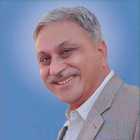 Dr. Shailesh Nayak is the Chairman of the Earth System Science Organization and Secretary of the Ministry of Earth Sciences, Government of India since August 2008, where he provides leadership for programs related to Earth system sciences. He obtained his PhD degree in Geology from the M.S. University of Baroda in 1980. In 2007, he was responsible for setting up a state-of-the-art tsunami warning system for the Indian Ocean in the space of just two years, providing tsunami advisories to the Indian Ocean rim countries. Dr. Nayak has also pioneered the development of algorithms and methodologies for application of remote sensing to coastal and marine environments. He helped generate a baseline database of the Indian coast, and developed services for fishery and ocean state forecast. Dr. Nayak was awarded an Honorary Doctor of Science degree by the Andhra University in 2011, and was conferred the prestigious ISC Vikram Sarabhai Memorial Award in 2012 as well as the Bhaskara Award for 2009, Fellowship of the International Society of Photogrammetry & Remote Sensing (ISPRS) for his outstanding contributions in remote sensing and GIS. He has published over 80 papers in peer-reviewed journals.
Dr. Shailesh Nayak is the Chairman of the Earth System Science Organization and Secretary of the Ministry of Earth Sciences, Government of India since August 2008, where he provides leadership for programs related to Earth system sciences. He obtained his PhD degree in Geology from the M.S. University of Baroda in 1980. In 2007, he was responsible for setting up a state-of-the-art tsunami warning system for the Indian Ocean in the space of just two years, providing tsunami advisories to the Indian Ocean rim countries. Dr. Nayak has also pioneered the development of algorithms and methodologies for application of remote sensing to coastal and marine environments. He helped generate a baseline database of the Indian coast, and developed services for fishery and ocean state forecast. Dr. Nayak was awarded an Honorary Doctor of Science degree by the Andhra University in 2011, and was conferred the prestigious ISC Vikram Sarabhai Memorial Award in 2012 as well as the Bhaskara Award for 2009, Fellowship of the International Society of Photogrammetry & Remote Sensing (ISPRS) for his outstanding contributions in remote sensing and GIS. He has published over 80 papers in peer-reviewed journals.

